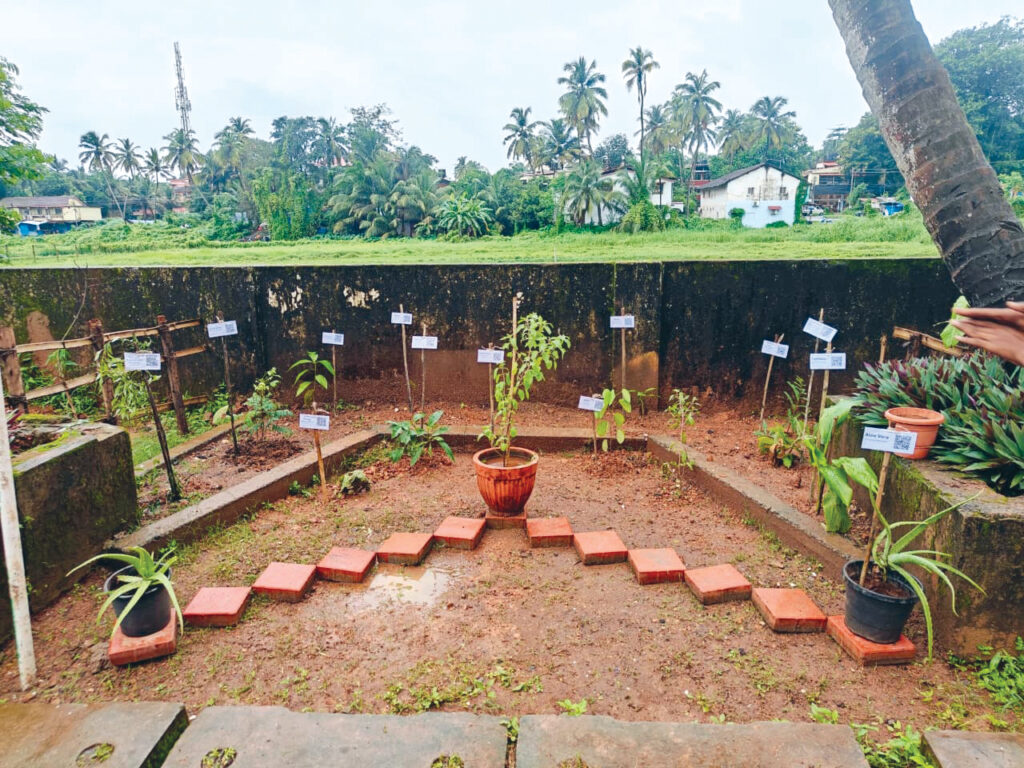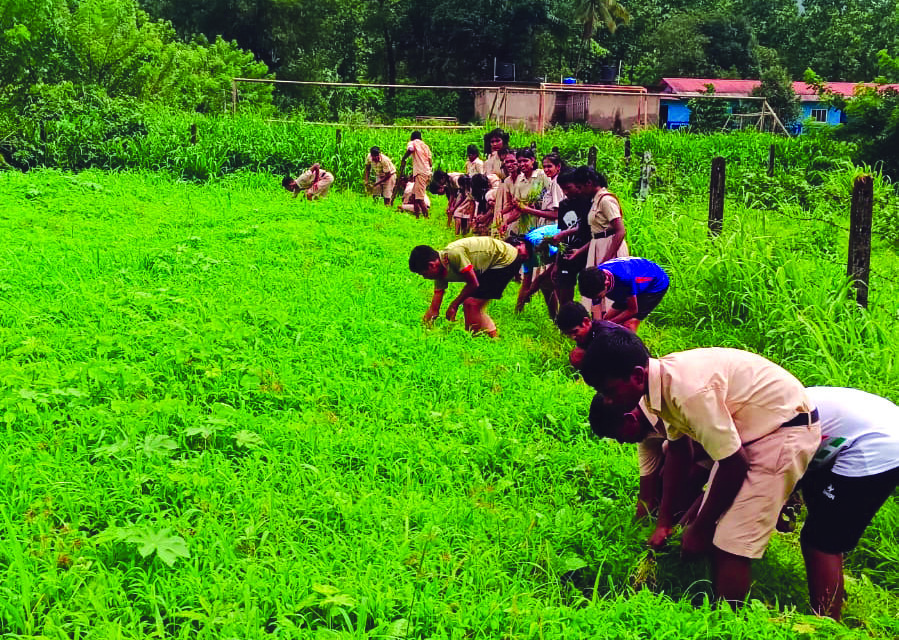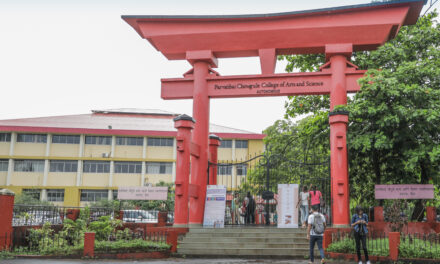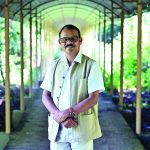From seed sowing to harvesting, the initiative of herbal, medicinal, and nutritional gardens at schools is planting more than crops. It is cultivating awareness and respect for the land
ADITHI SHARMA | NT KURIOCITY
Over the last two years, Goa has witnessed a quiet but significant transformation in its schools. From just 121 institutions maintaining nutritional gardens, the number has risen to 635 — more than five times the original figure. Under the recommendations of a central scheme and the broader vision of the National Education Policy (NEP) 2020, these gardens are not only greening campuses but also shaping the behavioural patterns and food habits of young learners.
Students across government and aided schools now spend at least two hours a week tending to vegetables, herbs, and fruit saplings in dedicated plots. The initiative is designed to address micronutrient deficiencies, promote sustainability, and instil respect for farming, while creating a hands-on learning space.
In 2023–24, about 20 schools in Goa introduced Agriculture as a skill course for Classes 9 and 10 under the NEP framework, with qualified agriculture graduates appointed as NSQF instructors through the Samagra Shiksha Abhiyan. These instructors form the backbone of the programme, bridging textbooks with practice.
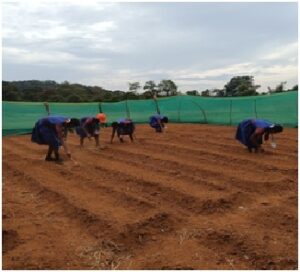
At Infant Jesus High School, Colva, agriculture instructor Rushab R. Velip explains that their herbal and nutritional garden was “born out of a desire to promote sustainability, health, and environmental awareness among students.”
The garden, he says, functions as a “living laboratory,” closely aligned with the Agriculture syllabus. Students in Class 9 focus on solanaceous crops such as tomatoes, chillies, and brinjals — right from sowing to harvesting — while Class 10 pupils study irrigation, weed management, and pest control, applying these techniques directly in the garden. “The activities range from crop selection and soil preparation to integrated pest management and post-harvest handling,” he says, adding that the hands-on exposure allows students to connect scientific concepts like photosynthesis or soil science with real-world applications.
For many students, these gardens are their first direct contact with agriculture. “It develops not just skills but also respect for farmers, natural resources, and food sources,” says Krutika Raut, NSQF instructor at Don Bosco Farm High School, Sulcorna. Her school maintains vegetable, fruit, and herbal gardens, cultivating tulsi, lemongrass, curry leaves, kokum, amaranthus, ladyfinger, and drumstick, among others.
Raut emphasises that the garden encourages students to see the link between what they grow and what they eat. “They learn eco-friendly practices like composting with kitchen waste and rainwater harvesting,” she explains. She points out that balancing long-term crops with quick-yield varieties like coriander or red amaranthus helps keep students motivated, while challenges such as water scarcity or pest infestations are turned into lessons on resilience and sustainable farming.
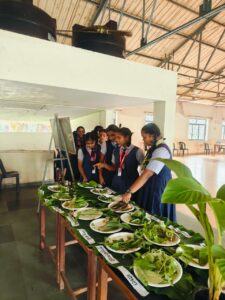
At Tudal High School, Gaodongrem, Canacona, agriculture instructor Riya Metri describes the nutritional garden as an extension of the skill framework itself. “Students enjoy hands-on activities like land preparation, planting, and caring for vegetables,” she says. For Metri, the garden not only builds competence in soil preparation, composting, and pest management but also nurtures teamwork and responsibility. Students also participate in exhibitions such as the ‘Monsoon wild vegetables of Goa’ and ‘Poshan Mah’ celebrations, which link classroom learning to cultural traditions and nutritional awareness.
One of the most notable impacts of these gardens is the transfer of knowledge from students to their families. “Students learn the importance of fresh fruits and vegetables in a balanced diet and the medicinal properties of various herbs. They take this knowledge home, encouraging families to grow and use fresh produce,” says Velip, who organised an exhibition of wild Goan vegetables to highlight their nutritional and medicinal value.
Metri shares that her students went a step further during the ‘Ek Ped Maa Ke Naam’ campaign, planting a fruit or spice tree at home to honour their mothers. “This promoted sustainability and environmental awareness beyond the school premises,” she explains.
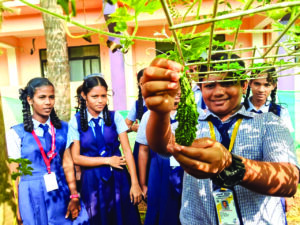
While the current expansion is linked to central schemes and the NEP 2020, school gardens in Goa have a longer history. Former agricultural officer at the Directorate of Agriculture, Miguel Braganza, recalls that government high schools earlier offered agriculture as an additional subject for Classes 9 and 10, with nutritional gardens maintained by agriculture graduates. “More than 60 schools once achieved 100 per cent results in SSC with the help of agriculture as a subject. Gardening was the motivation to succeed,” he says.
Braganza cites the example of Fr. Pio Furtado, who encourages vegetable cultivation and even paddy fields in the schools where he served as principal, sometimes supplying surplus produce to the Goa State Horticulture Corporation. He also recounts how, in 1993, central sector schemes for vegetables and floriculture were operationalised through school kits. More recently, kits worth Rs. 5,000, including gardening tools, have been distributed to schools under the nutritional garden scheme.
“Seeds, sowing, transplanting, irrigation, and pest management are all part of the curriculum for Classes 9 and 10. When students are given encouragement and appreciation, they achieve more than expected,” says Braganza, adding that the annual Festival of Plants and Flowers at SFX High School, Siolim, continues to showcase innovative student projects.
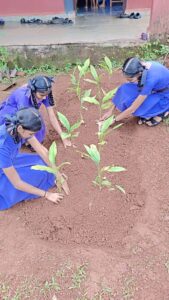
Principals too are seeing the wider value of these gardens. Fr. Furtado, who was earlier the principal at Miracles High School, Sanguem, and now serves as principal of Fr. Agnelo High School, Pilar, observes that gardening “creates a sense of discipline and responsibility among students while simultaneously addressing health and nutrition.” With support from schemes and occasional grants, schools are able to set up and maintain gardens with modest investment, ensuring maximum participation.
The benefits extend beyond agriculture. As outlined in the scheme’s objectives, students learn not only about the nutritional value of vegetables and the harmful effects of junk food, but also concepts like colour, size, and texture, connecting gardening to science and environmental studies. They acquire life skills such as planning, decision-making, and teamwork, while contributing to a cleaner, greener school environment.
Fr. Furtado recalls, “When I first arrived here during the COVID year, the land was overgrown. We began by cleaning the place and soon set up a herbal garden with the support of the department.” Each child was given a sapling to take home, and the excitement was immediate. Over the next year, the initiative expanded into a full-fledged nutritional garden with more than 20 varieties of vegetables, almost all locally grown. Fr. Furtado adds that the school’s composting practices, including fish compost, enriched the soil and produced remarkable yields.
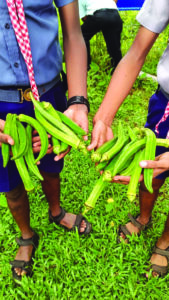
For him, agriculture is not merely an extra-curricular activity but a way of shaping character. Each class is allocated a small plot, complete with tools and seeds, where children are encouraged to experiment. “It is fulfilling to see them come out with novelty when they are given responsibility,” he observes. The school has grown brinjals, ladyfingers, tomatoes, spinach and even zucchini, while assemblies and exhibitions focus attention on the value of locally grown produce.
Beyond vegetables, Fr. Furtado has also introduced paddy cultivation to his students. With seedlings sourced from a farmer friend in Anjuna, the school planted black rice, reaping nearly 90 kilograms in the first harvest and earning about Rs. 30,000 from its sale. “The children not only learned cultivation but also realised its economic value,” he explains. The school has also grown turmeric and marigold, demonstrating to students the diversity of crops possible through organic methods.
Yet, his journey has not been without frustration. “There is hardly any support from the government or departments,” he admits, pointing out how promises of organic manure or assistance often fail to materialise. Despite the setbacks, his conviction remains firm: “I have great faith in my students. They may bring a low yield today, but tomorrow, with the right push, they will succeed.”
For instructors and students alike, the herbal and nutritional gardens are more than a subject requirement — they are shaping values and long-term choices. “Students develop a deeper appreciation for agriculture and may even pursue careers in it,” says Velip, adding that exposure to eco-friendly practices equips them for sustainable living. Raut agrees, noting that the gardens “nurture responsibility toward the environment” and encourage healthier food habits.
